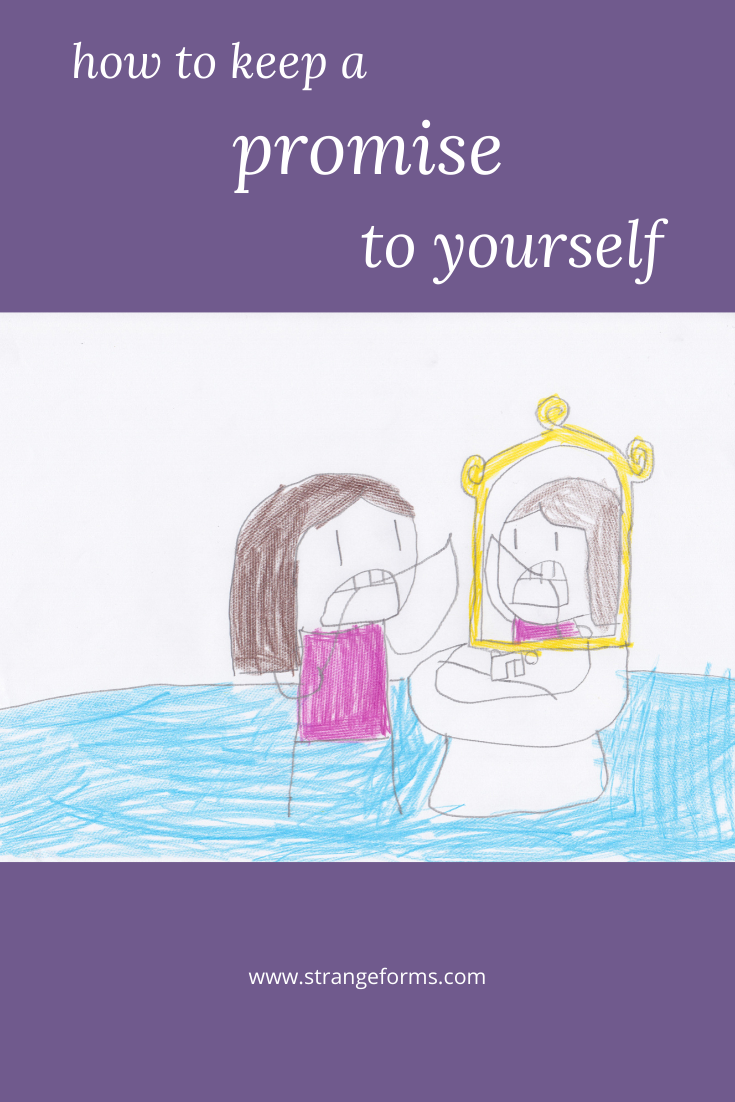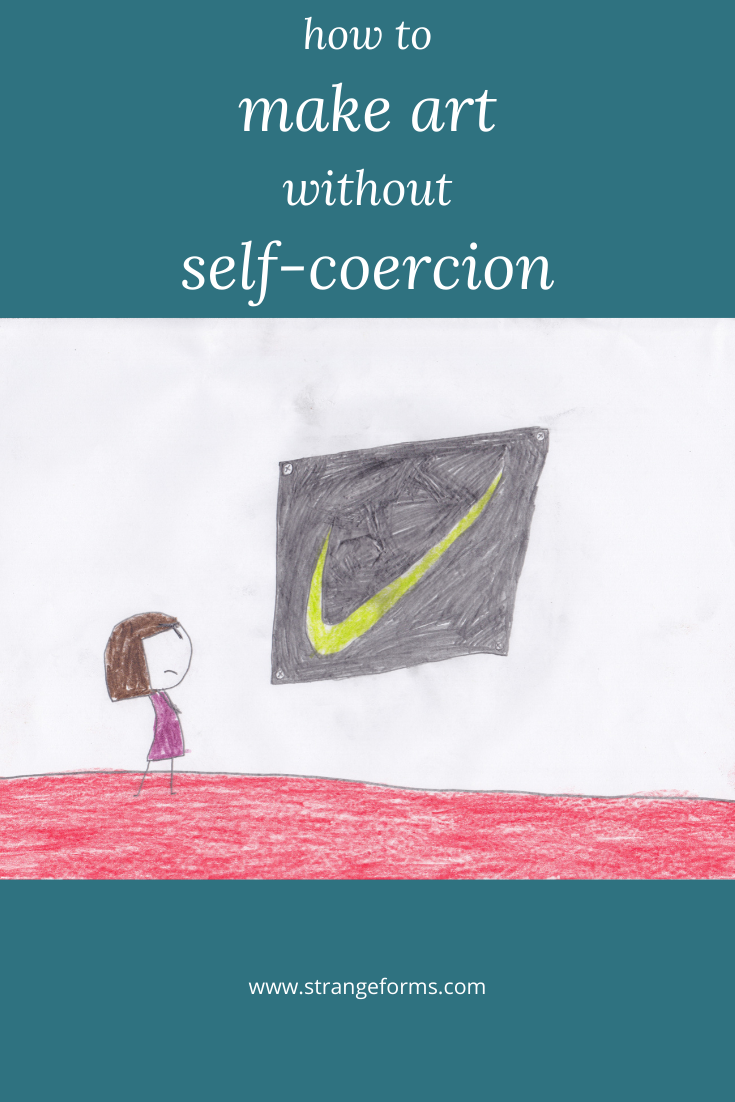I’ve kept a promise to myself for eight years.
Since 31 December 2011, when I made the promise, I have had a daily creative practice.
Let me say that again:
A Daily. Creative. Practice.
Not, to invent an example out of whole cloth, “Make a big plan! Leap in on Day 1 like a creative WARRIOR, slay ALL the dragons! Coast on this incredible success until…
…well, until you notice you haven’t done any work in a month, and your brain’s gone all floppy and sad…”
No – daily, in fact.
For 2,922 days.
And counting.
This is good, right, because if there’s one thing the Official Creativity Wonks agree about, it’s the importance of a daily practice.
(We may safely assume they teach them this at Wonk School.)
The benefits of a daily practice are fairly obvious – they include steady progress, increased skill, and plenty of that sweet, crunchy brain-fodder that can only be got by doing your creative work.
The principle that helped me to establish my daily practice is counterintuitive to the point of absurdity, and I want to share it today in case it helps you too.
It all started far, far away from here…
Some time in 2011, I came across an interview with a Stanford professor specialising in behavioural change, BJ Fogg.
The interview was fascinating, but what really stuck with me was one tiny story that Fogg told, which managed, as such things sometimes startlingly do, to unlock one of the head-cages I’d been crouching in for most of my life.
It was a story about teeth – Fogg’s teeth, and specifically the flossing thereof.
Yes, flossing – bear with me…
In the story, Fogg wants to develop the habit of flossing his teeth regularly.
So he makes a commitment – or in other words, a promise to himself. He will floss, he declares, one tooth per day.
One tooth.
That’s all.
If he flosses one tooth, he succeeds in keeping his promise.
You can imagine what happens, of course: pretty much every day, he ends up going on to floss more than one tooth. Often even (gasp) the whole lot.
But every tooth beyond the first is a bonus.
You might be thinking this sounds familiar…
On the surface, it seems quite like “baby steps” – a phrase beloved of motivational types everywhere, from FlyLady to Lao-Tzu. Somewhat similar is Barbara Sher’s excellent notion of the Complete Willingness Unit – a chunk of work sufficiently small that it doesn’t trigger resistance.
But the One Tooth Doctrine (as BJ Fogg to my knowledge has never called it) feels different to me. There’s just … something about it. It’s stubborn. It’s defiant.
It’s ridiculous.
Declaring that flossing one tooth is good enough to be called “success” is … absurd. It’s outrageous.
So much so that it feels like a radical redrawing of boundaries. God, even thinking about it stirs my indignation. It’s like something an angry toddler would do to show just how much they are not doing whatever it is you want them to do.
How can you say one tooth is enough?
How can you?!
And yet, if you do, it seems that the neuroscience works in your favour: you floss that tooth, and because that’s the commitment you made, your brain goes, “Yay! We did it! We succeeded!”
(The brain is, in many ways, a simple animal.)
Good feelings ensue, which reinforce your motivation to continue, and to floss another tooth tomorrow.
And suddenly, it’s liberating!
So I took this and ran with it…
You’ll laugh.
Here is the promise I made to myself: each day, says I to me, I will write one word (novel, blog post, journal…) and make one stitch (sewing, knitting, crochet…).
And I’ve done it – 2,922 times in a row so far.
Yes, there have been a few days when I’ve done literally one word and one stitch. Migraine days. Joint pain days. Fever days. Travel days. The days (plural, dammit) when I ended up in Accident & Emergency with a kidney stone or a sick kid. That sort of thing.
But the point is that even on those days, I’ve still succeeded. I’m still feeding the happy chemicals to my brain.
I’ve kept my promise to myself.
And it’s working
The monumental, dazzling benefit of this initiative is that it has put my creative work – and the support practices that enable it to happen – firmly at the top of my priority list (a position that for the first thirty-several years of my life was exceedingly precarious).
To get my fix of Yay! I must find a way to to write and to stitch, each and every day.
2,922 days ago, I had been “writing a novel” for so long that the early drafts were pressed into clay tablets in cuneiform script.
Since that day, I’ve rewritten the novel (again), sold it to a publisher, worked with my editor on several more rounds of rewrites, and (this is my favourite bit) PUBLISHED it. Then started on the next one.
(Oh, all right, the next three. Parallel projects are my thing.)
2,922 days ago, I’d done a fair bit of stitching in my time, but it would come and go from my life depending on how busy I was – this despite having run a craft-related blog for a couple of years at that stage.
Since that day, I’ve quilted, embroidered, crocheted, and knit a growing heap of things, and I’ve completed a pair of City & Guilds certificates in textiles.
With this one seemingly risible technique, I completely changed my behaviour in relation to my creative work, with dramatic cumulative effects.
Would it work for you, do you think?
Try it and see.
You can just jump straight in – right now, today, because the whole point is that the individual action takes no time at all!
And if you want a bit more guidance, “Floss One Tooth” is also included in my free e-course, Reboot Your Creative Drive, which gives you seven techniques to reintegrate your creative work into your daily routine (if you take the course you’ll also get my newsletter, which is lovely). Click that link there for more details.
Whether you take the course or go it alone, I highly recommend this technique. It changed my life. Give it a go. What have you got to lose?


